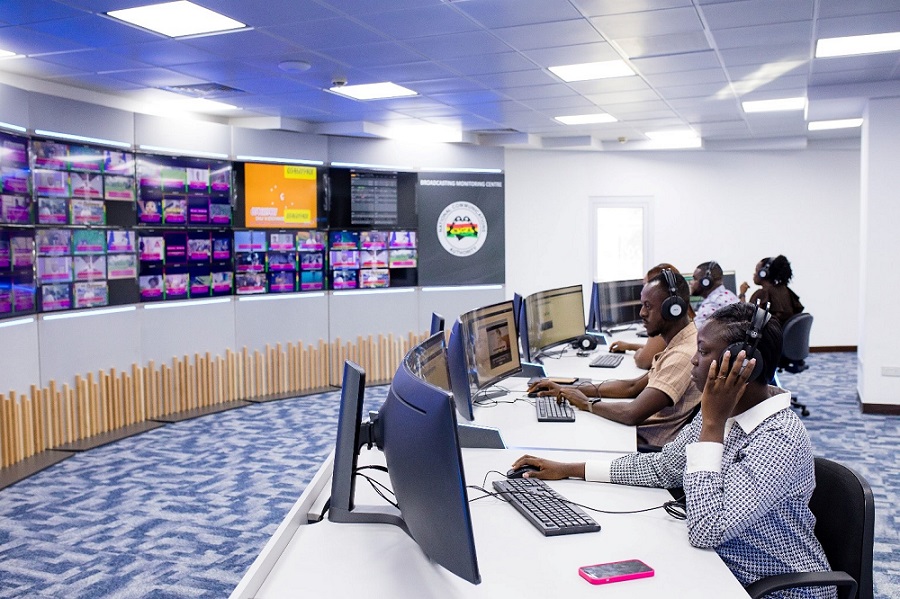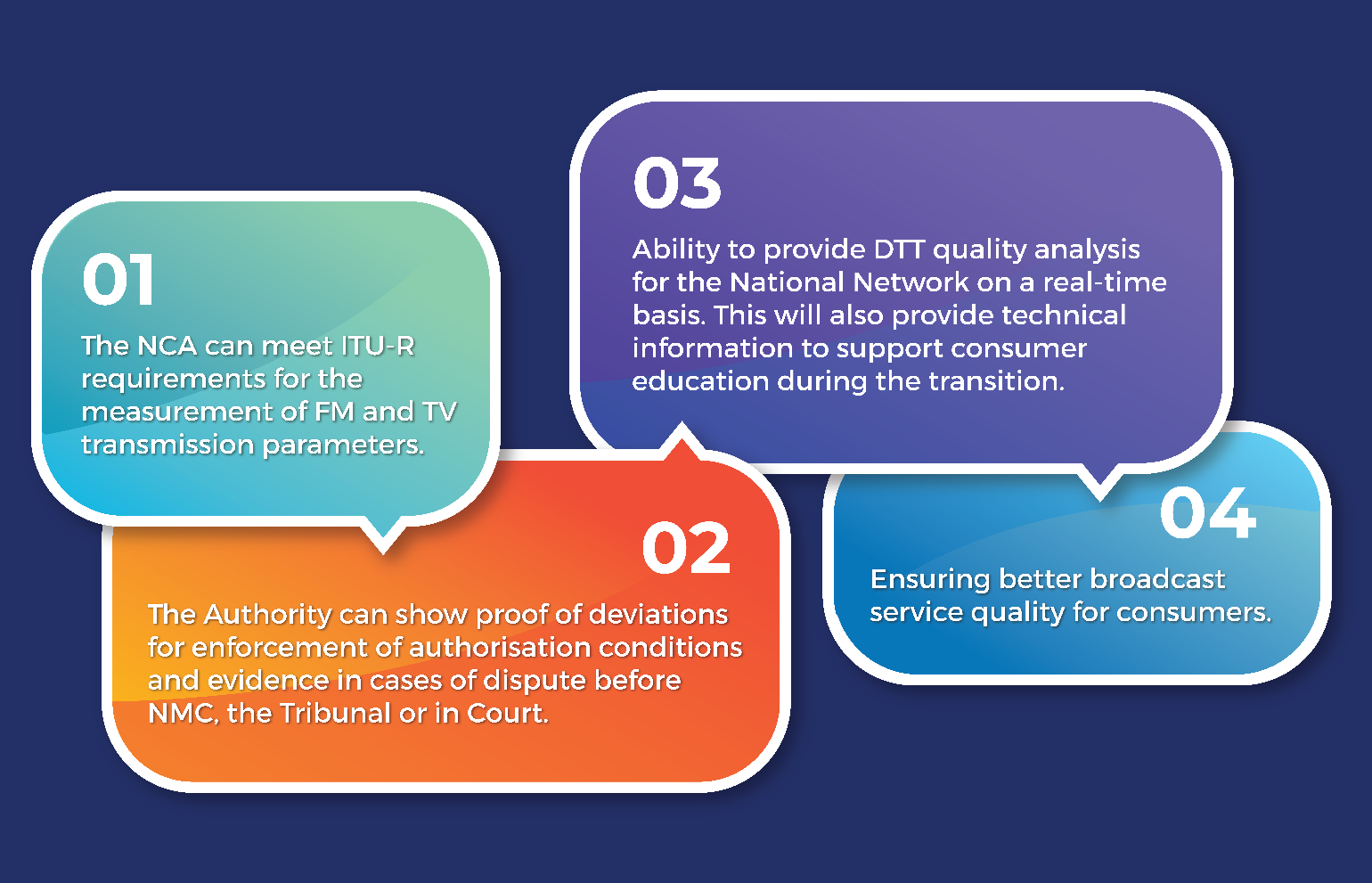Broadcasting Monitoring Centre
Background
Section 2 of the Electronic Communications Act of 2008, Act 775 mandates the National Communications Authority (NCA) to regulate the radio spectrum designated or allocated for use by broadcasting organisations and providers of broadcasting services. In furtherance of the above, the Authority has the mandate to determine technical and other standards and issue guidelines for the operation of broadcasting organisations and bodies providing broadcasting services.
In Ghana, the NCA regulates sound and television broadcasting services in consultation with the National Media Commission (NMC) as required by Section 3(d) of the National Communications Authority Act, Act 769.
In light of this, in 2021, a Stakeholders’ Consultative Meeting was held in the quest to address emerging issues relevant to Broadcasting in Ghana. To enhance the cooperation agreement between the Broadcasting Regulatory bodies (NCA and NMC) and effectively carry out the decisions from the meeting, it was imperative to install an independent monitoring system which records content and can produce them for review, analysis or evidence.
Existing Broadcasting Monitoring System
In 2018, the NCA established a Broadcasting Monitoring System (BMS) for the monitoring of Television and FM radio broadcasting services consistent with its mandate under Section 62 of Act 775. The law also mandates the NCA to operate frequency monitoring stations to monitor the use of the frequency spectrum, and carry out a technical function necessary for fulfilling the requirements of the Radio Regulations of the International Telecommunication Union (ITU).
This System was primarily focused on analysis of the frequency and technical specifications of Television and FM radio broadcasting services. However, the recording of content was included to facilitate the analysis of signals. Sufficient storage was also provided to preserve content records for up to three (3) months.
The BMS was extended to the Regional/Zonal Offices of the NCA outside the national capital to provide monitoring capabilities in the respective regions. While the BMS installed at the Head Office facilitates the comprehensive monitoring of broadcasting services in and around Accra, the installations in the other regions provide in-depth off-air Digital Terrestrial Television (DTT) and FM Radio monitoring in other parts of the country.
This decentralisation is significant since the National DTT network is designed to transmit on two multiplexes – a national multiplex on the same frequency with the same content throughout the country and Regional multiplexes with some channels specific to particular regions.

The New Broadcasting Monitoring Centre (BMC)
To enhance the capabilities of the BMS, there was the need to expand the existing BMS to provide for the under listed hence, the installation of the Broadcasting Monitoring Centre:
• Recording of about one hundred (100) video channels (terrestrial/satellite)
• Recording of FM radio content in Accra
• Monitoring of 13 satellites with provision to scale up to 16

Technical Capabilities of the BMC
Following the expansion of the scope of the system, there are myriad of capabilities and these are summarised below:
Content Recording of FM Radio Broadcasting Stations – The system supports the recording and retrieval of at least 50 FM radio stations in Accra and has an appropriate hardware for tuning, recording with date and time stamp, storage and retrieval.
Television monitoring capabilities – The system has the capability of combining 24/7 transport stream monitoring with a fully configurable multi viewer (Mosaic) of decoded video, audio bars and monitoring status. In effect, it supports television monitoring functionality that are not limited to the under listed:
- Analysis and decoding audio, video and system information.
- Support for digital satellite and terrestrial television broadcast monitoring, with decoding of DVB-T, DVB-T2, DVB-S, and DVB-S2.
- Support the recording and storage of videos.
- Capability to monitor free-to-air as well as encrypted television broadcasts.
- A video-wall that displays the videos being monitored or recorded.
Television TS recording, error-logging and archiving capabilities – The system supports the management, archiving and monitoring of data. This 24/7 media logger keeps records of all errors and violations including the duration of each error and can be exported for review and analysis. The video errors are also shown on each channel on the video wall.
Monitoring of multiple Satellite TV Sources – The system makes provision for the simultaneous monitoring of the following satellite sources:
◆ Astra 2F at 28.2oE
◆ Eutelsat 7B at 7oE
◆ Intelsat 37E at 18oW
◆ Amos 17 at 17 oE
◆ SES 5 at 5oE
◆ ABS 3A at 3oW
◆ Intelsat 20 at 68.5oE
◆ Astra 2G at 28.2oE
◆ AzerSpace 2 /Intelsat 38 at 45.1oE
◆ AzerSpace 1 / AfricaSat 1A at 46oE
◆ Belintersat at 51.5 oE
◆ Eutelsat 36C at 36.1oE
◆ 3 sources to accommodate services from satellites which may commence broadcasting services to Ghana at a future date.
Benefits to Industry and Consumers


